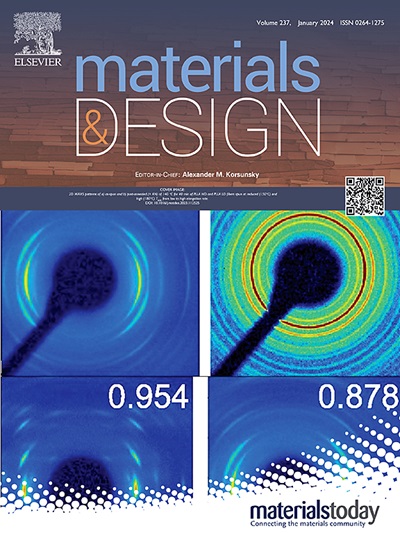Influence of carbon on the rheology and additive manufacturability of Ti-6Al-4V powders
IF 7.6
2区 材料科学
Q1 MATERIALS SCIENCE, MULTIDISCIPLINARY
引用次数: 0
Abstract
The focus of this work was to determine the effect of carbon blending on powder-part properties of titanium alloy Ti-6Al-4V. To assess this, carbon blends of both grade 5 and grade 23 from 0.1-1.0 wt% C were prepared. Part printability using laser powder bed fusion (LPBF) was assessed by measuring the segregation, flowability, rheology, and spreadability of the powder. Blend quality was assessed chemically and visually via computed tomography and scanning electron microscopy. Carbon blends above 0.25 wt% C produced significant segregation of carbon particles. Agglomerated carbon segregates acted as barriers to flow causing the reduction in dynamic flow by 40–60% compared to the virgin powders. High carbon contents also limited powder spreadability by promoting large streaks during powder spreading. Below 0.25 wt% C, the deleterious effects of segregation, flowability, and spreadability were reduced and the powder characteristics were comparable to the processable virgin powders. Printed parts exhibited very small effect of carbon blending on the density and micro-hardness of the material. The grade 23 powder is more suitable for carbon blending and offers the highest part densities and lowest variation in material hardness. This is attributed to lesser carbon agglomeration, better powder flow, and fewer interstitial elements.

求助全文
约1分钟内获得全文
求助全文
来源期刊

Materials & Design
Engineering-Mechanical Engineering
CiteScore
14.30
自引率
7.10%
发文量
1028
审稿时长
85 days
期刊介绍:
Materials and Design is a multi-disciplinary journal that publishes original research reports, review articles, and express communications. The journal focuses on studying the structure and properties of inorganic and organic materials, advancements in synthesis, processing, characterization, and testing, the design of materials and engineering systems, and their applications in technology. It aims to bring together various aspects of materials science, engineering, physics, and chemistry.
The journal explores themes ranging from materials to design and aims to reveal the connections between natural and artificial materials, as well as experiment and modeling. Manuscripts submitted to Materials and Design should contain elements of discovery and surprise, as they often contribute new insights into the architecture and function of matter.
 求助内容:
求助内容: 应助结果提醒方式:
应助结果提醒方式:


